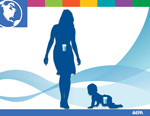Children's Health Curriculum Lesson 1: Environmental Health 101

This lesson helps kids connect the earth to their schools, homes, and communities and teaches them how they all affect each other.
Kids Will Be Able To:
- define environment and environmental health;
- list the four things that all living beings need (air, water, food, and shelter) and give examples of each;
- understand why children are often more at risk from environmental health hazards; and
- understand that their actions can help to create a healthier environment for themselves and for everyone around them.
How to Get This Lesson:
- The complete lesson plan offers everything you need, including all visual materials.
Download the complete lesson plan
Lesson 1: Environmental Health 101
Download parts of the lesson plan
Instructor materials:
Lesson Cards (PDF) (6 pp, 2 MB)
Handouts for students:
Take-Home_Talk (PDF) (1 pg, 551 K)
Visuals:
Poster 1 Environment (PDF) (2 pp, 1 MB)
Poster 2 Environment (PDF) (2 pp, 745 K)
Poster 3 Environment (PDF) (2 pp, 564 K)
